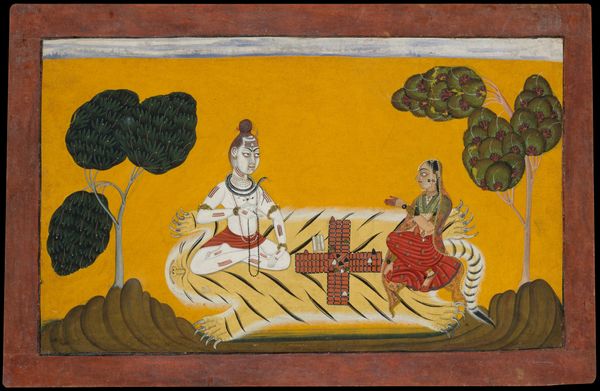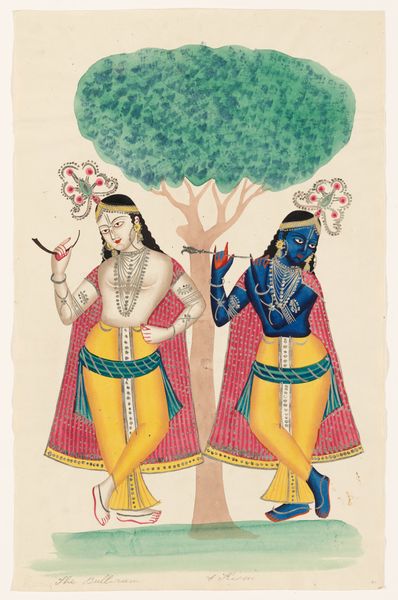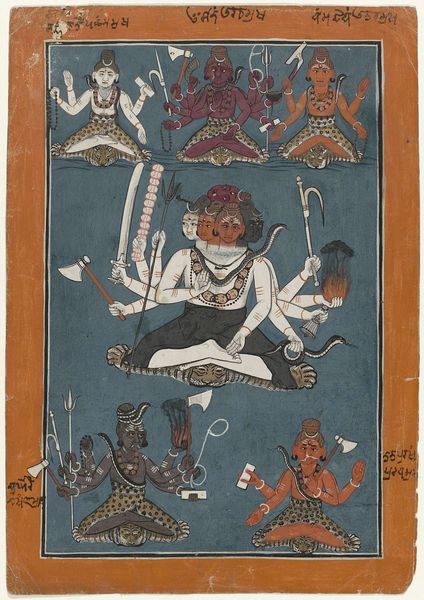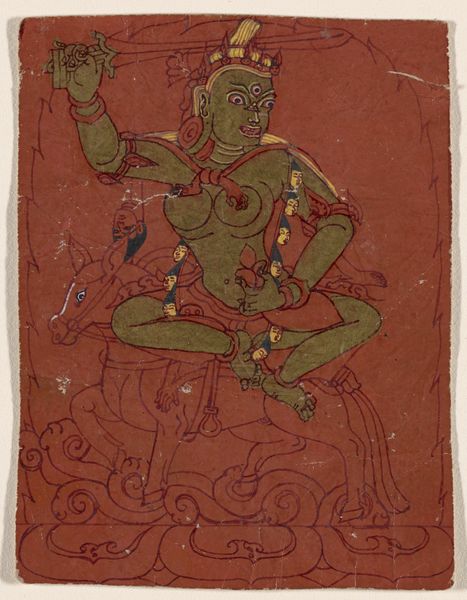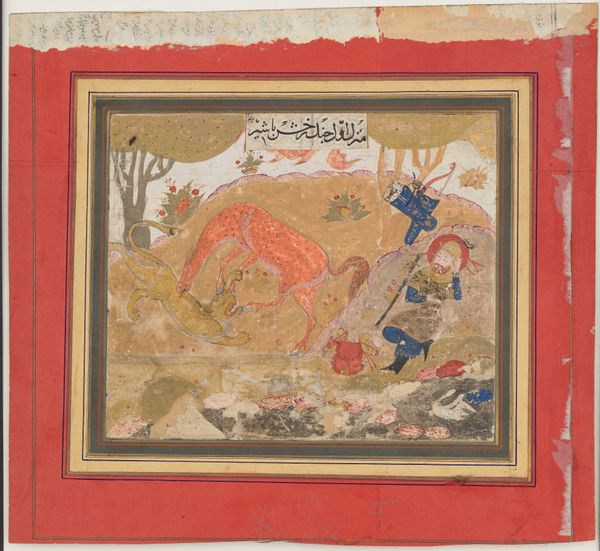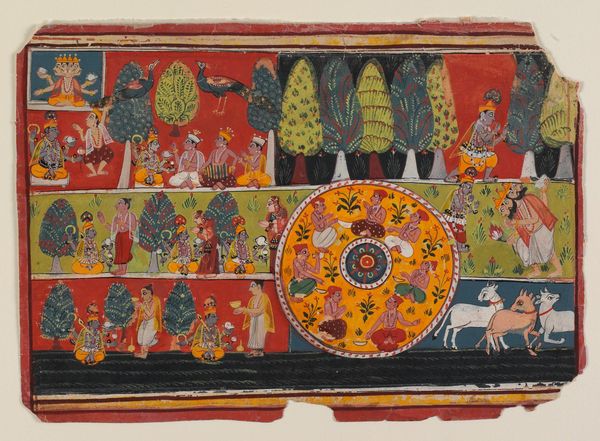
painting, watercolor
#
water colours
#
painting
#
asian-art
#
figuration
#
watercolor
#
islamic-art
#
history-painting
Dimensions: H. 7 1/4 in. (18.5 cm) W. 10 3/8 in. (26.5 cm)
Copyright: Public Domain
Curator: What a powerfully evocative composition! This painting, “The Goddess Bhairavi Devi with Shiva,” was rendered in watercolors sometime between 1605 and 1660 by the artist Payag. It now resides at the Metropolitan Museum of Art. Editor: Yes, striking indeed. My immediate sense is of devastation, or perhaps potent creation through destruction? The red figure dominates the scene, poised amid what appears to be a charnel ground. Curator: Note how Payag utilizes line and color. The sinuous lines defining the figures contrast with the jagged, almost chaotic depiction of the landscape. And the artist’s restrained palette, punctuated by that intense red, draws our eyes directly to the Devi. She becomes the focal point, the apex of all that potent visual energy. Editor: Absolutely. The red demands attention. Red often carries multiple connotations across cultures, doesn't it? Here, beyond simple symbolism, perhaps it embodies raw, feminine power, the shakti, fiercely independent from the traditionally pale-skinned male god—the passive Shiva—in her presence. Curator: Shiva is certainly rendered quite differently. Yet it's through Shiva, still meditating calmly in the face of all the destruction, that one can perceive Bhairavi as the power behind enlightenment, dispelling illusions. Editor: Exactly! The goddess dances in the charnel ground, revealing reality by stripping away earthly illusions. In this light, what looks destructive can be perceived as the very engine of change. A world constantly being destroyed so it can be remade, a force represented as female and active! The historical implications of this within patriarchal structures are difficult to ignore. Curator: Perhaps so, yet I also think the composition emphasizes that balance, how Bhairavi’s dance and Shiva’s stillness work in concert. They are codependent for the continuity of the world, portrayed with remarkable delicacy for such potentially volatile imagery. Editor: I agree; Payag really captures a multifaceted perspective, leaving space for multiple understandings, highlighting, for me, the vital strength often relegated to the margins. Thank you for your enlightening structural analysis. Curator: It has been equally fascinating discussing it through such a critical lens. Thank you.
Comments
No comments
Be the first to comment and join the conversation on the ultimate creative platform.

